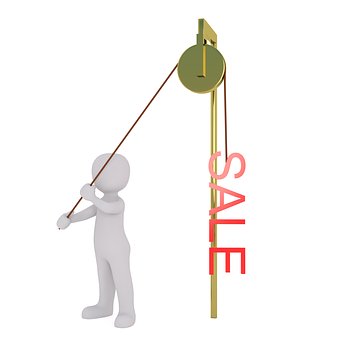Chally Group discovered that 39% of B2B buyers select a vendor according to the skills of the salesperson rather than price, quality or features of the products. It’s also to be noted that by the time the buyer meets the salesperson, most of the products related knowledge has already been researched by the sophisticated buyer. All that is just a “click” away. What really happens in the salesperson-client meeting is — “Why should I work with you?” question by the buyer. This leads to the belief that the ultimate sale depends heavily on the skill and techniques of the salesperson.
As a Sales Leader for more than 2 decades with multi-industry selling experiences across Asia, Europe and the Americas, I have managed salespeople from all over the world and have witnessed various selling trends and methodologies as well. I have myself learnt various selling techniques through several well-known sales training programmes, mostly from Western sources. Being based in Asia and selling to local, regional and international organizations, I can safely conclude that most of these programs don’t really apply globally given the high level of contextualization, customization and localization needed for the different countries, market segments and organizations.
Sales Training should ideally be very purpose-built for the organization based on its business objectives, type of products or solutions, their unique differentiators (some call it USPs or Unique Selling Propositions), market and market landscape. Of course, it also matters what kind of hunter and/or farmer sales roles it is – Inside Salesperson, Outside Salesperson, Transactional Salesperson or Account Manager. It’s useful to put them through online Predictive Sales Assessments to understand their sales related skills and competency gaps so that the training can be carefully crafted to address the gaps.
Suppose I am tasked to train a Team of Asian salespeople. Cutting across the various sales roles, SALES 101 is a must which should cover the core fundamentals of selling:
- Nuts and bolts of the various fundamental selling steps
- Persuasive communication and presentation
- Understanding the various stakeholders and what drives or motivates them (ie their Key Performance Indicators)
- Adjusting to the different personalities, speaking their language and creating a relationship advantage
- Learning to WIN the deal with WIN:WIN for both parties
- Negotiation techniques
- Time and priorities management
What’s extremely important here is – The Sales Training should have an heavy dose of Asian (even better if specific by country) context. How a Salesperson operates in Philippines varies from how (s)he operates in Hong Kong. How a Client behaves also varies depending on the country and culture, Whenever I deliver a Sales Training package to various locations of a MNC, I ensure country-specific contextualization and localization. Like Europe, there’s no one Asia strategy nor a one Asia selling methodology.
Next stage in Sales Training should be specific to the type of sales role. In other words, an Account Manager’s Training will take a differing route from a Business Development Manager (BDM). A BDM’s Stage 2 of Sales Training should cover:
- Understanding of the competitive landscape, competitive differentiators and the unique differentiators.
- Market segmentation and segment specific strategy Eg) Selling to an Energy company versus a banking institution
- Create a need vs Identify the need – Challenge-oriented and Insights-led approach. This is what Steve Jobs was very successful at. More than a decade ago, we didn’t know we would need a smartphone. He created the “need” rather than just a “want”. “Customer is king” mindset has to change. Salespeople must educate their clients to transition them to the future. With Industry 4.0, what worked before will not necessarily work in future.
- Selling versus Negotiating and Advanced Negotiation skills for extremely complex deals.
- Understanding of the different nuances for the different countries and markets
- Transforming Vendor-Client relationship to Partner-Partner relationship
The third stage is for a salesperson with team accountability. This is where higher-order sales management kicks in:
- Successfully selling to a MNC with optimum and effective coordination of the various salespeople
- Marketing as a complement of Sales
- Territory management, Pipeline management and Numbers forecasting
- Coaching to high performance and creating accountability
- Blue Ocean strategy and Value-Selling to drive high profitable growth that should lead to revenue disruption
- Effective business reviews geared towards surpassing the business goals

The blended training methodology should consist of:
- Predictive Assessment and Analytics
- Digital Learning – Pre- and Post-Training
- Action-oriented learning in the class with ample role-plays practice, games, quizzes, case study discussions and presentation opportunities
In this article, we have understood that traditional selling approaches have to be drastically modified to action-oriented and future-oriented way of selling. Buyers, their mindset and their behaviours have changed and salespeople will have to be far ahead of them to become their successful partners.
The author, Kannan Chettiar, is an International Trainer with more than 20 years of global selling experiences. He adopts unique techniques in sales training and teaches Industry 4.0 way of selling. For more information on engaging Avvanz, please write to consult@avvanz.com.



